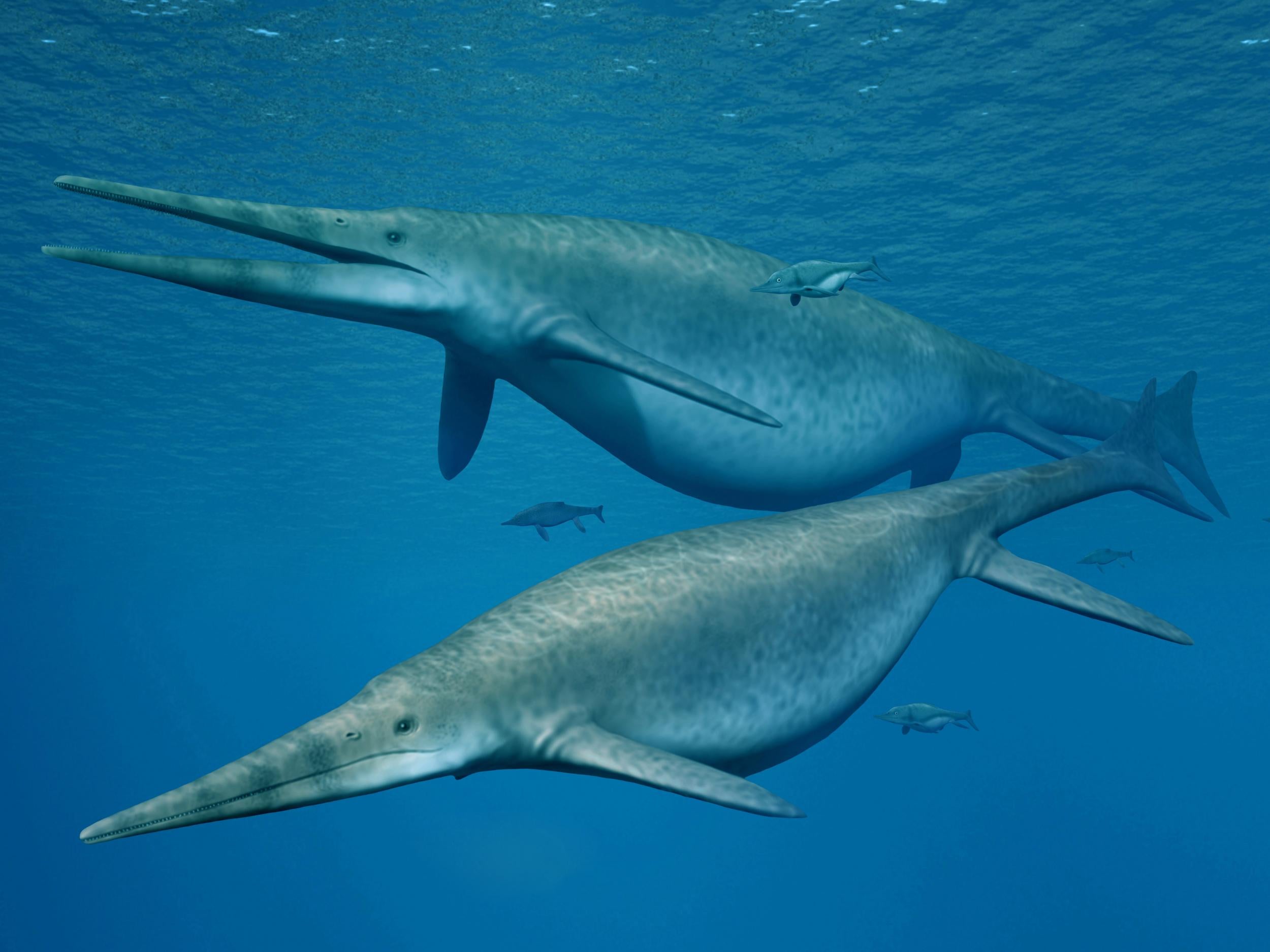Bone belonging to ‘one of world’s largest animals ever’ found in Somerset
Ancient jaw suggests animal was approaching size of blue whale, say palaeontologists

A jaw bone belonging to a gigantic underwater reptile has been identified as belonging to “one of the largest animals ever”.
Found by fossil collector Paul de la Salle in Lilstock, Somerset, the 205 million-year-old remains have now been analysed by an international team of palaeontologists.
They concluded it belonged to a type of fish-like predatory reptile called an ichthyosaur, and its discovery suggests other fossils found in the UK could belong to even larger creatures.
At 26 metres in length, the researchers noted the ichthyosaur was approaching the size of the blue whale – the largest animal to have ever lived.
“Initially, the bone just looked like a piece of rock but, after recognising a groove and bone structure, I thought it might be part of a jaw from an ichthyosaur,” said Mr De la Salle.
He made contact with ichthyosaur experts Dean Lomax, of the University of Manchester, and Professor Judy Massare, of SUNY College at Brockport, who both expressed an interest in studying the bone.
They compared the fossil – an incomplete bone called a surangular from the lower part of the animal’s jaw – with several other ichthyosaur specimens.
Notably, they looked at the bone in relation to a specimen held at the Royal Tyrrell Museum of Palaeontology in Canada, belonging to a species called Shonisaurus sikanniensis.
Measuring 21 metres, Shonisaurus was a true monster, and the largest known ichthyosaur.
However, the palaeontologists’ analysis suggested the bone found by Mr De la Salle belonged to a similar animal that was even bigger.
“As the specimen is represented only by a large piece of jaw, it is difficult to provide a size estimate, but by using a simple scaling factor and comparing the same bone in S. sikanniensis, the Lilstock specimen is about 25 per cent larger,” said Mr Lomax.
“Other comparisons suggest the Lilstock ichthyosaur was at least 20-25 metres.
“Of course, such estimates are not entirely realistic because of differences between species. Nonetheless, simple scaling is commonly used to estimate size, especially when comparative material is scarce.”
With the help of geologist Dr Ramues Gallois, the scientists were able to date the bone to the late Triassic period.
In their paper describing the discovery in the journal PLOS One, the scientists also suggested the new bone could be a sign that prehistoric Britain was home to many more of these enormous creatures.
Five additional bones discovered around Aust Cliff, Gloucestershire, in the 19th century were previously thought to come from dinosaurs.
However, the identification of the new giant ichthyosaur made Mr Lomax and his colleagues reappraise those bones.
“One of the Aust bones might also be an ichthyosaur surangular. If it is, by comparison with the Lilstock specimen, it might represent a much larger animal,” said Mr Lomax.
“To verify these findings, we need a complete giant Triassic ichthyosaur from the UK – a lot easier said than done.”
Subscribe to Independent Premium to bookmark this article
Want to bookmark your favourite articles and stories to read or reference later? Start your Independent Premium subscription today.

Join our commenting forum
Join thought-provoking conversations, follow other Independent readers and see their replies